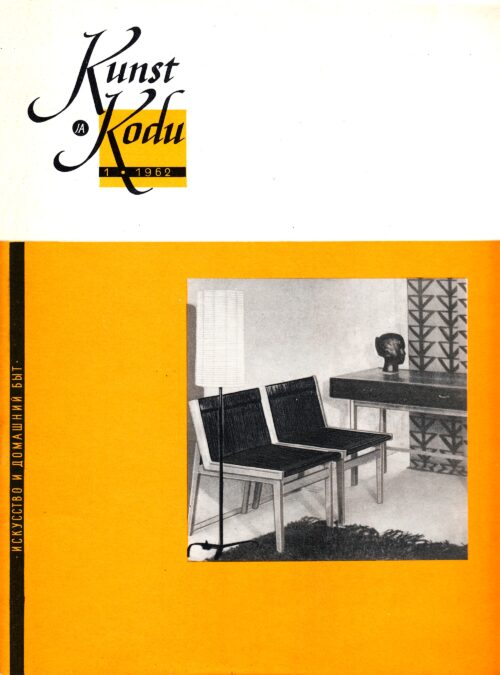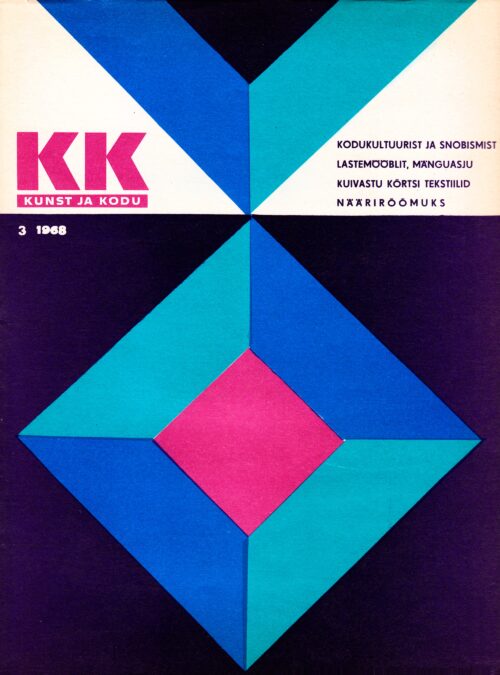Kunst ja Kodu
Launched in 1958, the Estonian-language Kunst ja Kodu (‘art and home’) was for a long time the Soviet Union’s only interior design magazine. It presented a comprehensive discussion of topics related to new homes, mainly small apartments, and how to furnish their interiors. The magazine provided advice on how to make a new home as functional and contemporary as possible. According to issue 1 of 1958, its central goal was to develop the ‘reader’s aesthetic taste in matters of domestic culture.’
The magazine focussed on practical ideas from the very start, publishing hands-on tutorials as well as regular inserts with detailed designs and instructions. For the designers, publishing their ideas in Kunst ja Kodu basically meant giving up their copyright and making their work a royalty-free product. However, this let designers reach a large audience while also letting readers create their own household objects based on carefully developed construction plans. With its large print runs (initially 20 to 25 thousand copies, later falling to 9 to 10 thousand copies in the 1960s), Kunst ja Kodu was clearly a popular alternative to the standardized design solutions otherwise available for the Soviet home.
The main focus shifted with the new editor-in-chief from 1973 to 1981, Andres Tolts (1949–2014), who was one of the first graduates of the recently founded industrial art department at the State Art Institute of the Estonian SSR. By inviting contributions from younger authors, architects, and artists, Kunst ja Kodu became a key publication in terms of writing about art theory and modern art. It was published until 1990, with fifty-nine issues in total.

